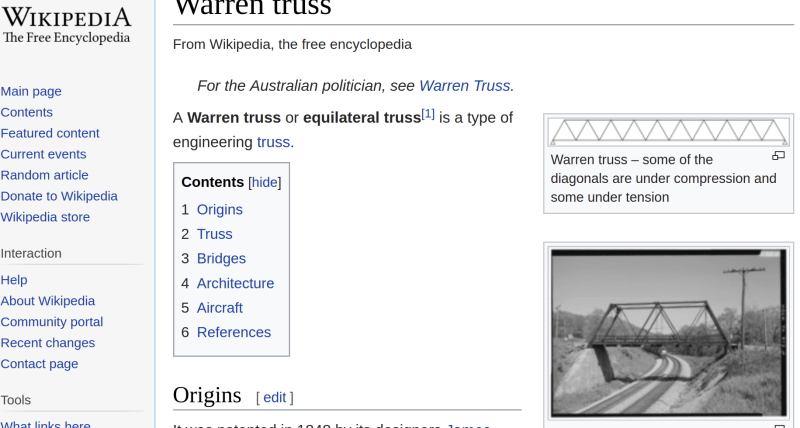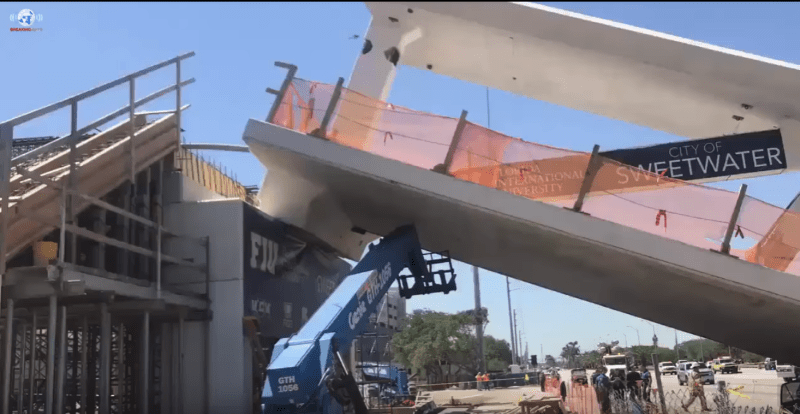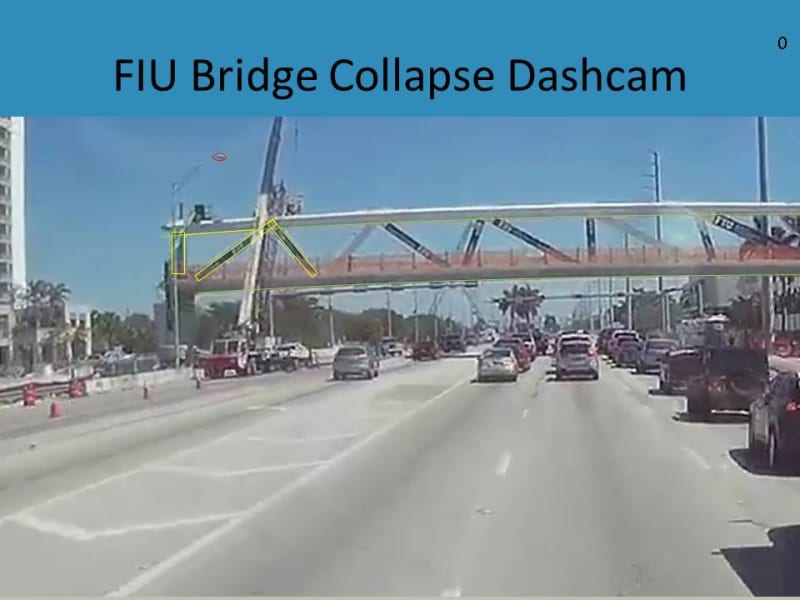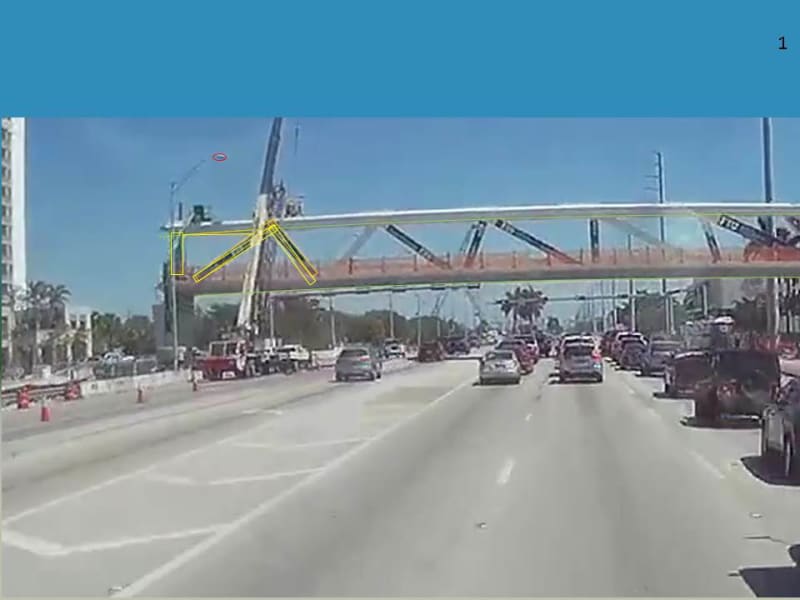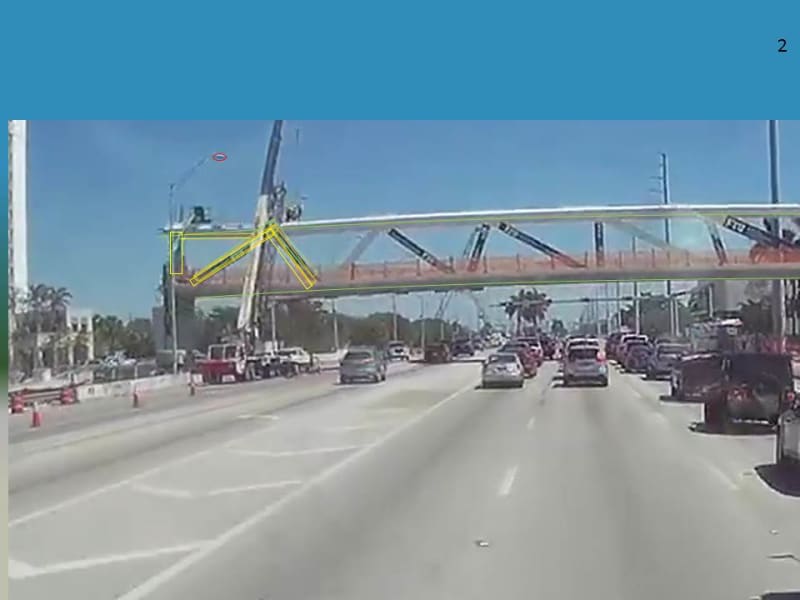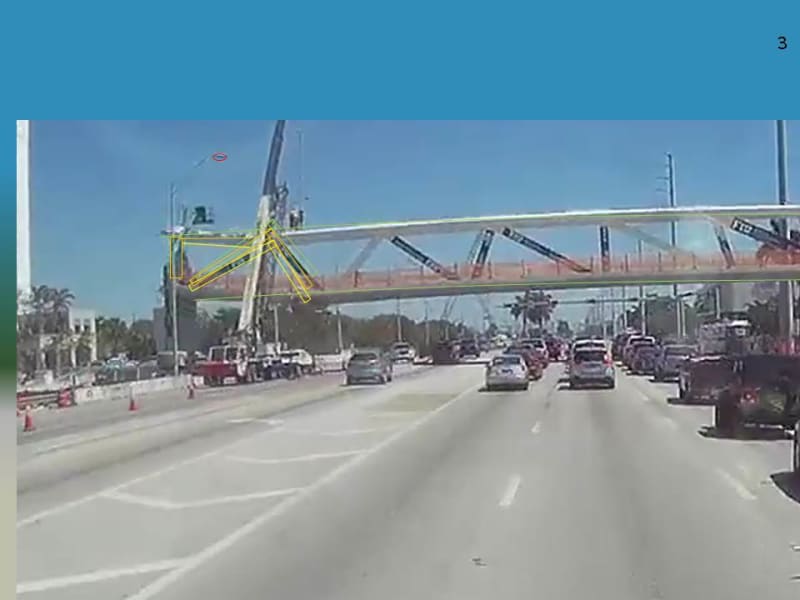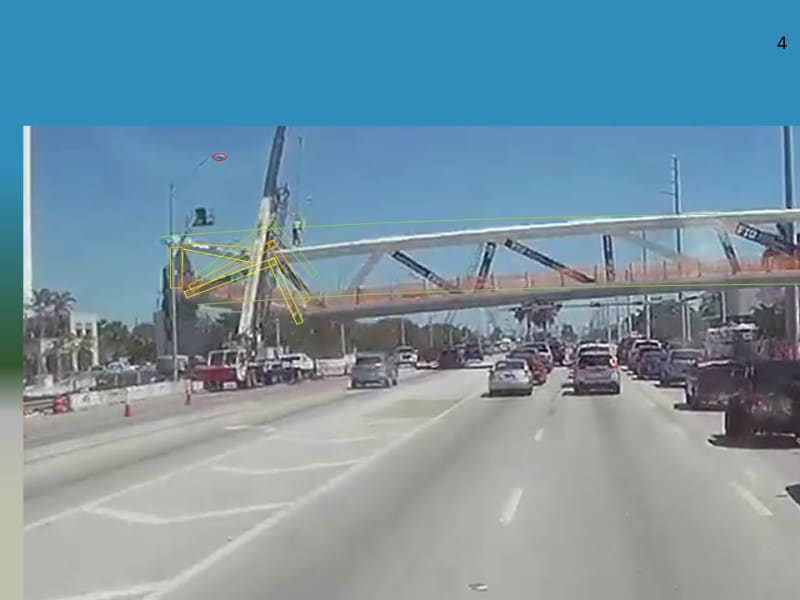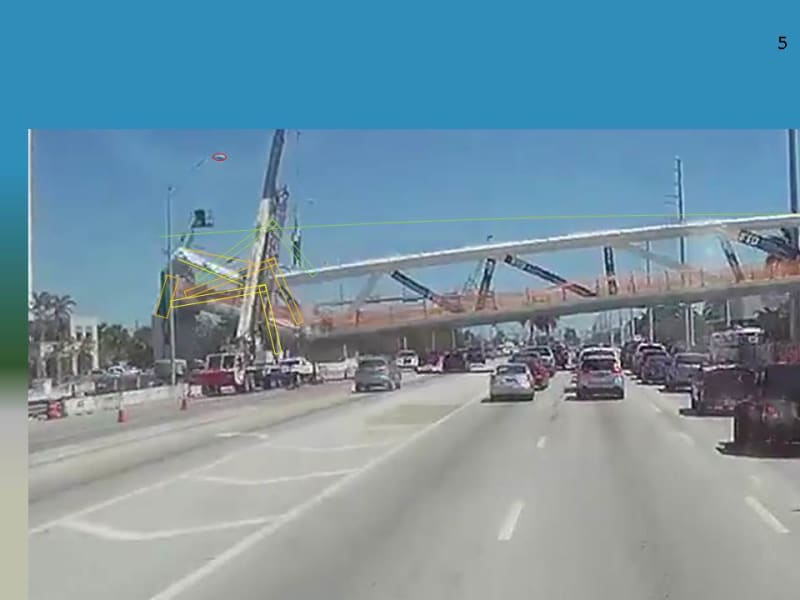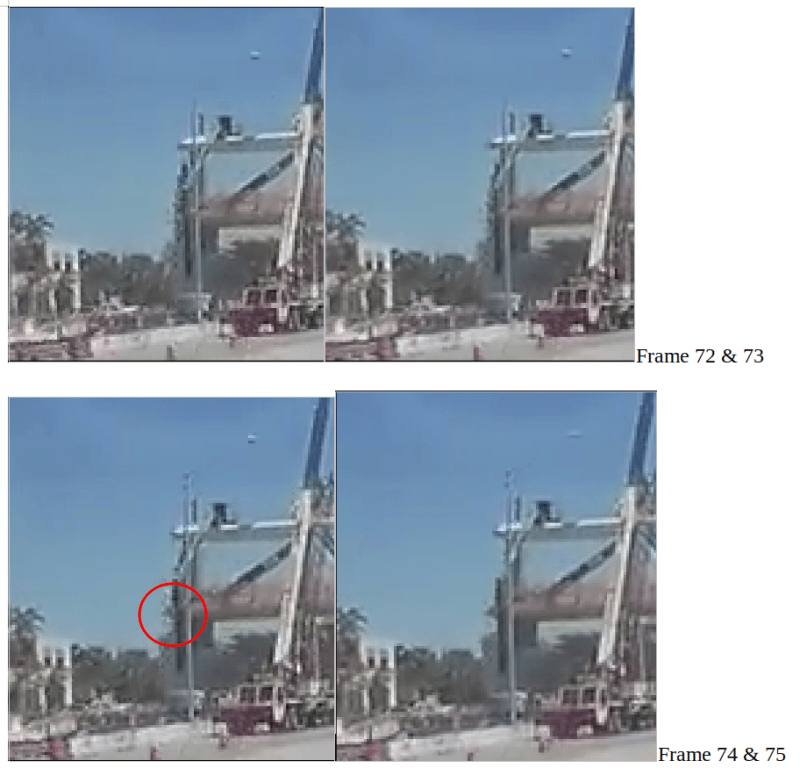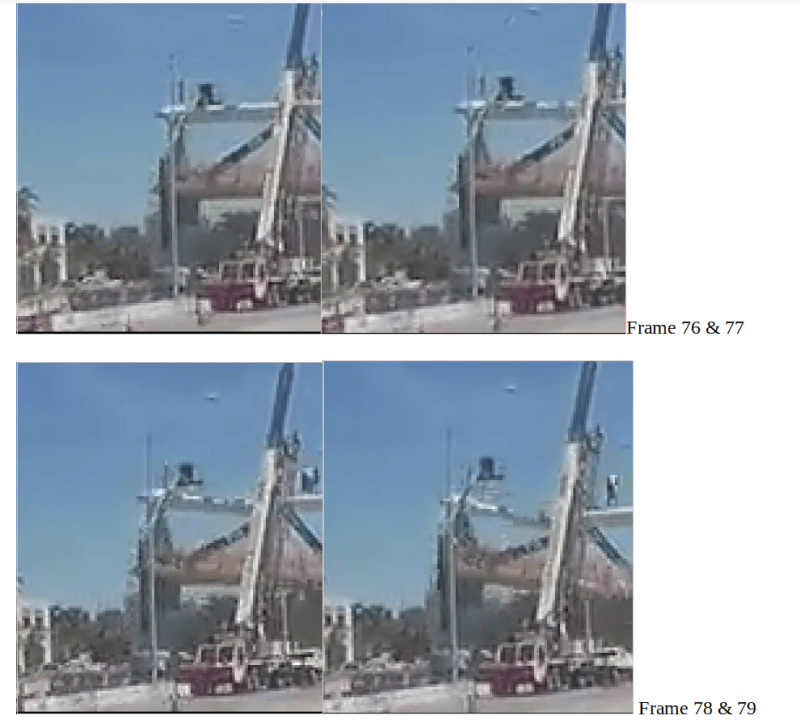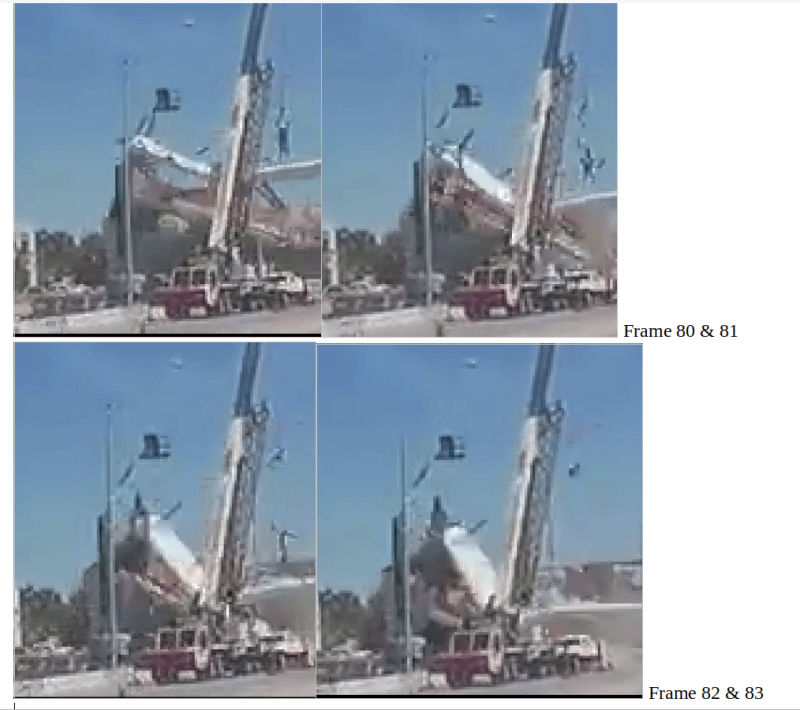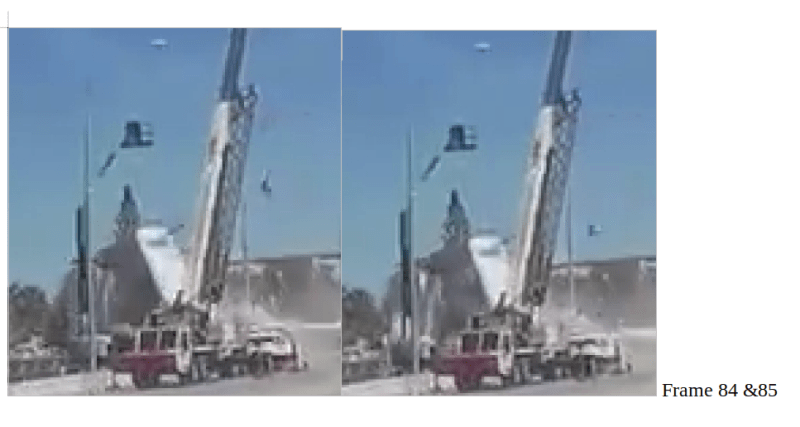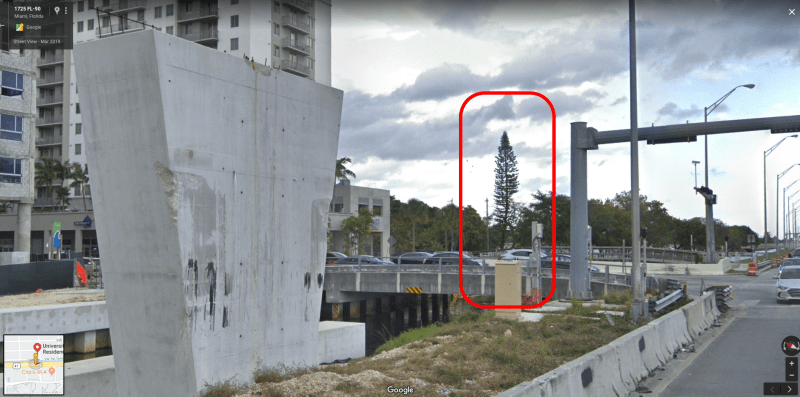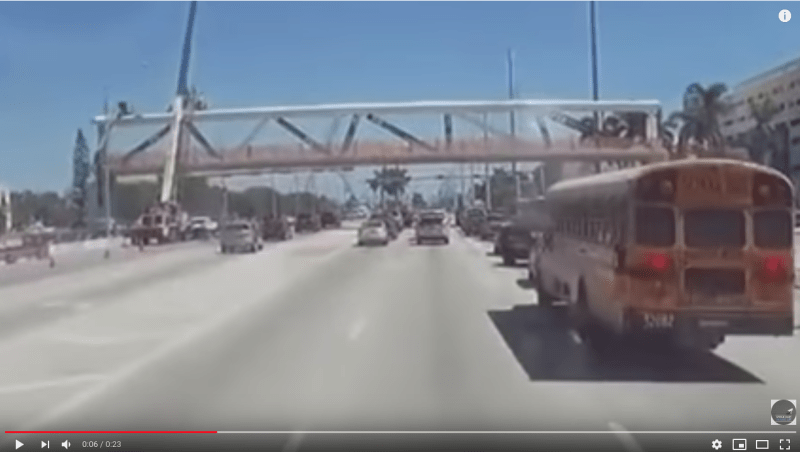MikeW7 (Electrical) said:
The most interesting frame is 057, which shows that both the canopy and deck were cracked and falling before member 12 was pushed off.
The use of the word "
before" in the above may be hazardous if this can be proved incorrect later.
People with structural engineering background are more easily convinced by the following:
(a) It is more difficult to have either the canopy at the joint canopy/10/11 and deck at the joint deck/9/10 to fail prior to the deck/11/12. Each diagonal member of every truss, like 9, 10 or 11, had an axial force internally which in statics could be replaced/substituted by one horizontal component and a vertical component in a ratio according to the triangle it makes with the horizontal. Thus the force in the upper section of 11 had a reaction opponent provided by the upper section of 10 to achieve equilibrium. Similarly the bottom of 10 and 9 could hold each other in equilibrium. The joint at deck/11/12 had nothing horizontally to act against with and logically became the easiest one to fail first among the three.
(b) The canopy section on top of Member 11 is structurally redundant. By that I mean it can be removed without affecting the behaviour of the structure. Indeed a standard Warren truss does not have it.
However the extra canopy section here provided the weather cover and served as anchorages for the longitudinal tendons in the canopy. The lack of structural importance of this section of canopy with Member 12 will become obvious if one examines the equilibrium condition at the joint where both meet but find neither of these two members has an opposite number to balance internal axial force with.
Since both canopy and Member 12 were rigidly joined together their member forces would have a full compliment of axial force, shear and bending moment but the axial force magnitude will be small by comparison. For example the canopy's shear, due to its half of last bay's dead weight, will be balanced by the axial force in Member 12.
(c) Had canopy/10/11 or deck/9/10 failed first then there is a good likelihood the north end could fail in a manner similar if not identical to its south end. The equivalent joint to deck/11/12 at the south end is deck/1/2. It was almost undamaged sitting on top of the pier after the collapse.
(d) There is an absence of photographic records and historical evidence pointing to the deficiency of either canopy/10/11 or deck/9/10. The shortcoming of deck/11/12 however was known as soon as the shoring was removed while the bridge was still at the roadside.
(e) Among the three joints of Deck/9/10, canopy/10/11 and deck/11/12 the joint deflection of the last is most devastating. Prior to the collapse 11/12 had horizontal deflection about 5 to 10mm or 1/4". Whenever Member 11 flattens its angle, by the addition of horizontal deflection to the horizontal dimension, its horizontal pushing force is increased at the expense of reducing the magnitude of the vertical component. The increased horizontal push then feeds more deflection. This would explain why the cracks were reported progressively getting worse daily. Geometrically it can be proved when the 11/12 deflects to clear the 24" wide Diaphragm II the horizontal pushing out force would have increased by about 3.5%. The deflection to the north by 11/12 could lead to a downward spiral impossible to stop once the point of no return had been passed. Once Deck/11/12 fails first the breaking of deck/9/10 and canopy/10/11 will follow as the consequential damages.
(f) I have repeatedly went over between your Frame049 and Frame057 and my observation are (1) bottom of 11 suddenly lost support and (2) Member 12 bent and its movement was similar in magnitude to the deck/9/10 and canopy/10/11. It is not possible with sufficient confidence to say which joint went first. To me the most important piece of information from your captured frames is Member 11 suddenly gave away. The apparent bending of the Member 12 could come from the local yielding near the vicinity of the joint with deck/11 by the concrete crushed/failed first but the embedded rebar were still fighting to hang on their position. Momentarily the local yielding of Member 12 produced a hinge which gave the impression the the Member 12 bent. After the collapse this yielding position or hinge was stripped off concrete leaving the rebar exposed.
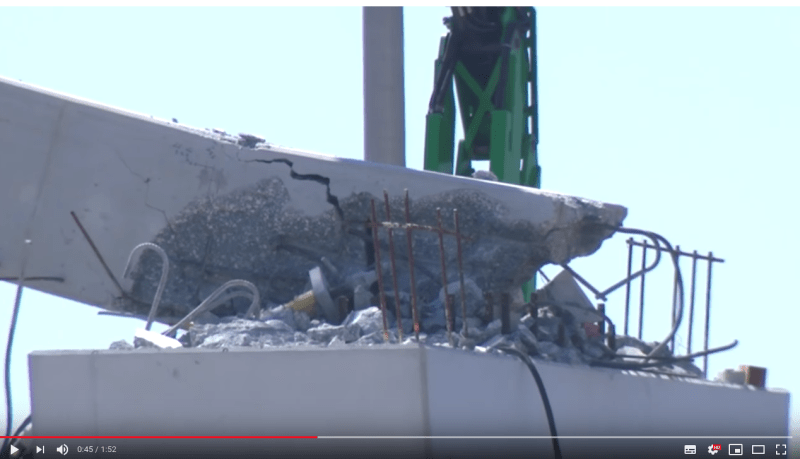
We all are interested in how this bridge failed. You have certainly done a great job using your skill to scan every possible clue from the video. I am just trying to make our assessment as watertight as possible. At the end of the day the collapse would be explained by the physics and none of the personal opinions would matter.
Sym P. le (Mechanical),
I also noticed the flexing of Member 12 and explained with Item (f) above. If the joint deck/11/12 failed first the damage joint could have concrete broken out and the remainder crushed resulting a local hinge formed momentarily during the collapse. Not saying my explanation is what had happened but just from the failure mechanism point of view such development should not be a surprise.

